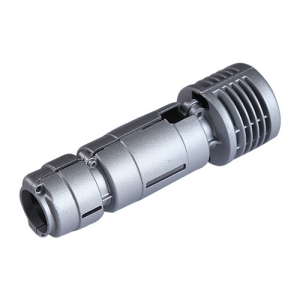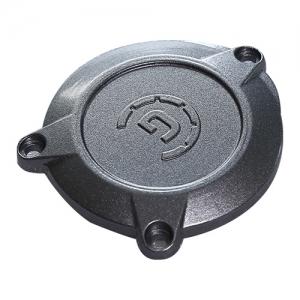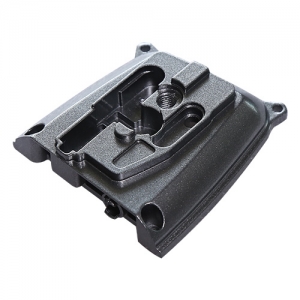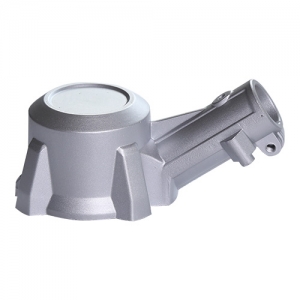Aluminum alloy die casting
- Product classification:Tool component
- product labeling:Medical Device Parts and Components Garden tools Other accessories 2494P-L front cover Aluminum alloy die casting 2520P-L front cover Aluminum alloy die casting Aluminum alloy die casting 2527P-L front cover Aluminum alloy die casting 2538P-L front cover High iron handrail Camera housing Magnesium alloy die casting Aluminum alloy die casting
- Times of browsing:Already1094Customer focus
Aluminum die-casting parts Aluminum die-casting parts custom processing
The electroplating of die-cast aluminum parts requires special pre-treatment due to the special properties of aluminum. These pre-treatments need to be adjusted due to different aluminum materials and different parts. It is not easy to follow the general process. Therefore, Workers of electroplating of die-cast aluminum parts sometimes need to perform pre-plating tests on die-cast aluminum parts. To conduct such tests, the first is the selection of pre-treatment processes and the design of improved methods.
The pre-plating treatment of die-cast aluminum/aluminum die-casting parts includes four important processes such as degreasing, acid etching, electroless plating or displacement plating, and pre-plating. The key is electroless plating or displacement plating. Therefore, the tests that are often done are all Focus on this process. Of course, different aluminum materials and different processing methods have different requirements for pre-treatment. For example, the pre-treatment of die-cast aluminum parts and rolled aluminum parts is very different, even if the same processing method Different aluminum materials also have different pre-treatment processes. For example, the amount of copper in aluminum directly affects the bonding strength of the coating. The test of the pre-treatment scheme for electroplating of die-cast aluminum parts is also a systematic comparison test. The sample is processed by different selected pre-treatment processes, and then the same electroplating process is performed, and then the bonding force is tested. The main point of this comparison test is to ensure that all processes except the difference process point are the same condition, otherwise There is no comparability and no evaluation.
Four methods for die-casting aluminum parts
Aluminum phosphating
The effects of accelerator, fluoride, Mn2+, Ni2+, Zn2+, PO4, and Fe2+ on the phosphating process of aluminum were studied in detail by SEM, XRD, potential-time curve and membrane weight change. It has the characteristics of good water solubility, low dosage and rapid film formation. It is an effective accelerator for phosphating of aluminum: fluoride can promote film formation, increase film weight and refine grains; Mn2+ and Ni2+ can refine grains. The phosphating film is uniform and compact and can improve the appearance of the phosphating film; when the concentration of Zn2+ is low, the film formation or film formation is poor. As the Zn2+ concentration increases, the film weight increases the O4 content, which has a greater impact on the phosphating film. The content of PO4 increases the weight of the phosphating film.
Aluminum alkaline electropolishing process
The research on the alkaline polishing solution system was carried out, and the effects of corrosion inhibitors and viscosity agents on the polishing effect were compared. The alkaline solution system with good polishing effect of zinc-aluminum die-castings was successfully obtained, and the operating temperature was reduced for the first time. Additives that extend the service life of the solution and improve the polishing effect. The experimental results show that adding appropriate additives to the NaOH solution can produce good polishing results. Exploratory experiments also found that the NaOH solution of glucose was used under certain conditions. After DC constant pressure electropolishing, the surface reflectance of aluminum can reach 90%, but there are still unstable factors in the experiment, which needs further study. The feasibility of using DC pulse electropolishing method to polish aluminum under alkaline conditions is explored. The results show that the pulsed electropolishing method can achieve the leveling effect of DC constant pressure electropolishing, but its flattening speed is slower.
Aluminum and aluminum alloy environmentally friendly chemical polishing
To develop a new environmentally friendly chemical polishing technology based on phosphoric acid monosulfate, which is to achieve zero emission of NOx and overcome the quality defects of similar technologies in the past. The key to the new technology is to add some special effects to the base fluid. Compounds are used to replace nitric acid. For this purpose, the chemical polishing process of aluminum tri-acids needs to be analyzed first, especially the role of nitric acid. The main role of nitric acid in aluminum chemical polishing is to suppress pitting corrosion and improve polishing brightness. The chemical polishing test in monosulfuric acid believes that the special substances added in the mono-phosphoric acid should be able to suppress pitting corrosion and alleviate general corrosion, and must have good leveling and brightening effects.
Electrochemical surface strengthening treatment of aluminum and its alloys
The process, properties, morphology, composition and structure of aluminum-based alloys in the neutral system to form a ceramic-like amorphous composite conversion coating. The film formation process and mechanism of the film were preliminarily discussed. In the Na_2WO_4 neutral mixed system, the concentration of the film-forming accelerator is controlled to 2.5-3.0 g/l, the concentration of the complex membrane is 1.5-3.0 g/l, and the concentration of Na_2WO_4 is 0.5-0.8 g/l. Current density is 6 - 12A / dm - 2, weak agitation, can obtain a complete uniform, glossy gray series of inorganic non-metallic film layer. The film thickness is 5 - 10μm, microhardness is 300 - 540HV, excellent corrosion resistance. The neutral system has good adaptability to aluminum alloy, and it can form a good film on various series of aluminum alloys such as rust-proof aluminum and forged aluminum.
Previous page:Aluminum alloy die casting
next page:Aluminum alloy die casting






